Well it’s time for the conclusion to this short series on how I get from a book idea to a book deal. As I’ve said previously, this is obviously specific to my own experiences and working with the folks I do, but I’d imagine there will be similarities for your own journeys. So it’s my hope that you’ll be able to glean a few things from what we’ve shared and that it would benefit you.

Today I have the privilege of sharing an interview with my incredible editor Frances Gilbert, of Doubleday Books. I have been working with Frances now for a number of years since I first was asked to illustrate I DON’T WANT TO BE A FROG (and the 3 that followed) by Dev Petty. I believe it was during that series that I noted how much Frances and I seemed to be on the same page when it came to communicating Dev’s story through the artwork. I’ve read a lot about other authors who have established these great relationships with editors and the incredible books they’re able to create and I’m excited that it feels like my relationship with Frances is on that same path.
***
MIKE: Hi Frances, I’m really grateful for your willingness to participate in this interview! I imagine you get quite a few submissions every day. How does that work for you? Do you read the ones with the best pitch or subject line or presentation?
FRANCES: I get about three or four picture book submissions each workday, so that roughly works out to about 800-1,000 submissions over the course of a year. Luckily for me, most picture books are under a thousand words, so I can read them quickly. Of all these submissions, I only acquire about fifteen a year.
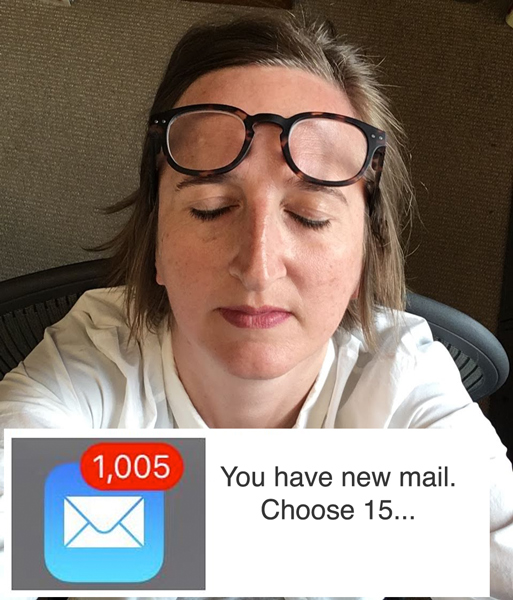
I read everything I get but I certainly open emails quicker if they have an insanely intriguing title. I recently acquired a book called “Emergency Kittens!” by Jody Jensen Shaffer and when I shared the news on Facebook I wrote that I would have acquired it even if the agent had just sent me a blank piece of paper with the title on it. I mean, how could I walk away from that?
MIKE: Does this mean you’re open to unorthodox submissions? Maybe this will save folks a lot of time and effort trying to sell their work in a “perfect” query letter. . . .
FRANCES: I get asked about query letters a lot at conferences for writers trying to break into publishing. And the truth is I actually don’t read query letters. I go straight to the story. If the story is great, I’ll go back to the query to get more info, and if it’s not, I have no need to read the query. I once mentioned this at a conference and told the room, “Honestly, you could write a query letter than just says ‘Dear Frances, Here’s the stuff’ and it wouldn’t matter.” And then, hilariously, a bunch of years later I got a manuscript in the mail with a query letter that said, “Dear Frances, Here’s the stuff”! That was so gutsy and funny! Alas, I didn’t acquire the manuscript. It always comes down to the manuscript in the end.
But, to answer the question in a more helpful manner, writers should make sure their queries and submissions are as clean and clear as possible. Because of how many we have to read each week, the easier you can make it on the agent or editor you’re querying, the better.
MIKE: So, how quickly do you know whether a manuscript is right for your list?
FRANCES: If it’s something I end up acquiring, I usually love it instantly. I love that “AHA!!!” moment when I read something that’s just crossed my desk and know I want to publish it. I often need to go and walk up and down the hallways a bit because I’m so excited.
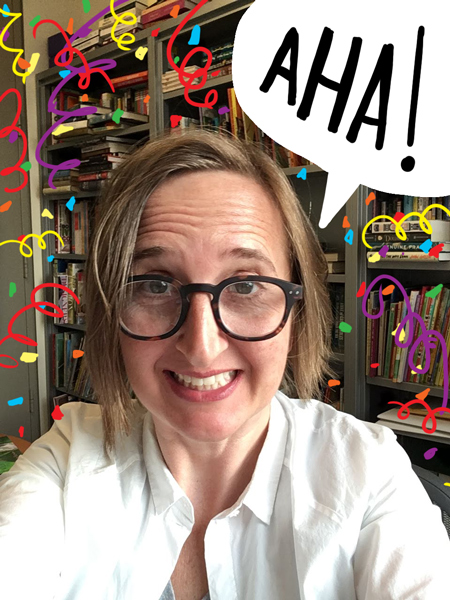
That’s the crazy thing about our jobs: we never really know when our next book is coming. You can be having a dry spell, thinking “I’ll never find another great book again”, and then you open your next email and there it is! I know it seems daunting to writers trying to get their work selected, but it’s probably useful for them to know that editors are just as eager to find their work. We’re not sitting at our desks with our arms crossed—we really, really want to find great stories to publish. Without great stories, we have no jobs.
MIKE: So, I’ve had stories that have been rejected before too. What are the reasons for ultimately deciding to pass?
FRANCES: I usually know very quickly when a story is not right for me—often by the middle of the first page. It can be for many reasons, but usually it’s because I get bored. I think my inner four-year-old is pretty close to the surface, and if I’m not pulled in immediately, I drift. If I drift, it’s all over. My boyfriend always kids me when he sees I’m losing interest in a topic. We’ll be chatting and he sees my gaze become unfixed and he says, “Uh-oh, you’re with the Care Bears right now, aren’t you?” So, yeah, if I end up with the Care Bears while I’m reading a manuscript, I’m not acquiring it.
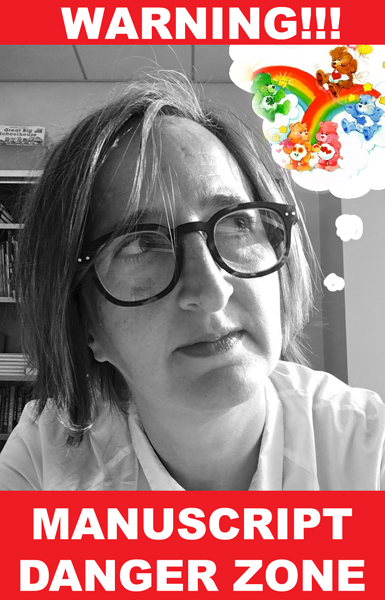
The tricky submissions are where you love so many things about a work, but equally feel that so many other things are not working. Or, you love the work thoroughly but you know your list isn’t the right home for it. Perhaps an editor has a commercial list and gets a lovely, quiet manuscript that would get clobbered going up against the busier titles in her program. Or perhaps it’s an editor with a really educational list. Maybe she loved reading a super-goofy manuscript but wasn’t able to make it fit her program. I always reject these close-but-not-quite manuscripts with a heavy heart, but also with a pretty strong feeling that someone will find it and will be the best place for that book.
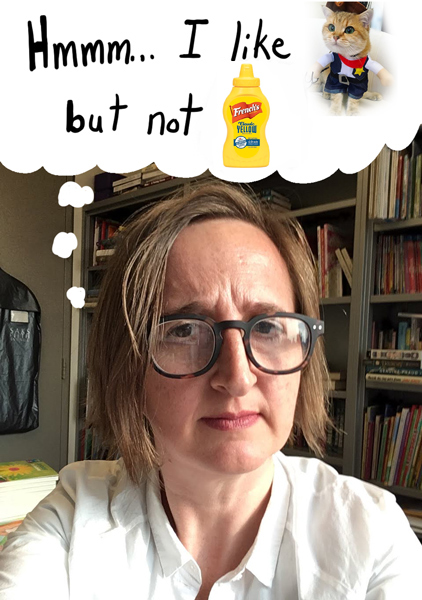
MIKE: That’s super interesting to me. I think up to this point I’ve always believed that when an editor passes on a book, it’s because they believe it can’t be published, they don’t like it and that’s it.
FRANCES: It’s very subjective. Writers shouldn’t be discouraged with rejections, as long as they are putting in the hard work—studying the craft of writing for children, working with a critique group, staying up to speed on what kids today enjoy reading, and critically editing and revising their work until it can’t get any better.
MIKE: Right! I’m always telling kids that this is career all about patience and practice. Since it’s a bit subjective to your tastes, are there certain types of books then that appeal to you? What makes for the “proof in the pudding” in your mind with the “acquire it” manuscripts you read?
FRANCES: I love it when a manuscript makes me laugh—hard! Not just a wry smile or a knowing nod, but a full-on giggle. After publishing your book with Dev, I DON’T WANT TO BE A FROG, I got a lot of submissions where the writer clearly knew what a humorous sentence looked like, but ultimately wasn’t a funny writer. You can’t fake it. When I first read Dev’s manuscript I laughed so hard I snorted.

I also love getting a manuscript where I find myself saying, “OOOOHHH, that’s SUCH a great idea!!” And then I quickly think, “Nah, I’m SURE someone’s already done this.” And then I check online and realize, “Holy smokes! No one’s published this idea before! I can’t believe it!” I’m working on just such a project right now. When it came in, I just smacked my forehead.
MIKE: So, with BAD DOG and FIND FERGUS, did you feel the same about both of them? What was it about these stories in particular?
FRANCES: I was taken aback by how different they both were. Different art styles even! But both very much you, certainly. BAD DOG was much more complete. I think I had maybe one edit for you. I loved the way you found a way to look at the differences between cats and dogs in such a unique way. And you’d already nailed the cover concept and title. We know from our research that picture book customers most often go to a bookstore without a particular book in mind. They decide on the spot based on cover and title. So, BAD DOG will make it very easy for them to decide.
And then you and I had a long chat about FIND FERGUS before I made an offer because the first half felt very complete, but the second half felt like you were still working out some ideas. (Actually, I think our chat was mostly about curling, but then we got on to books at some point.) That’s when you told me that you and Dan Santat had talked about the book as “A Where’s Waldo? book if Waldo were really bad at hiding.” And that settled it for me, mostly because that’s the best elevator pitch I’ve ever heard and I will steal it and use it. And because you and I have worked together so much, I know that your books always get even better as they progress, so I count on us having a great time figuring out the back nine on that book. And that’ll probably happen around the time curling season starts again, so we can have some good chats about that too.

MIKE: I’m already looking forward to it! AND yes, my roughs can be very VERY rough. Makes me all the more grateful that you could see the potential in it still. How do you finally decide if a book gets acquired at Doubleday?
FRANCES: I’m lucky that my boss Mallory Loehr has an editor-friendly acquisitions process. In my case, I usually just jump up and down in her doorway shaking a manuscript excitedly in the air. Then she somehow finds time in her busy schedule to read it and get back to me. She trusts her editors, and that means so much, I can’t even tell you. And when she does come back and says I should probably let something go, she’s usually confirming a suspicion I had but couldn’t admit.
A lot of houses have very formal acquisitions meetings, often with rooms full of people debating a project. I often feel like those rooms try to make this a hard science, whereas it’s really more alchemy. I’m grateful I get to hash it out with my publisher and make a decision that she and I agree is the right one.
MIKE: So, BAD DOG made your cut. Is that all it takes? What’s next?
The next thing in store for BAD DOG at Random House is list launch. About a year in advance of a book’s publication, publishers have huge meetings (at our place they take two days), where the editors present the books they’ve acquired to the rest of the division for the first time, in a giant room with everyone from sales, marketing, publicity, finance, international, production, and inventory. There’s a ton of prep work, as it’s your ONE shot as the editor to impress on the folks who’ll be selling and talking up your book that they should pay attention to this particular title, amongst the hundreds of other titles they’re hearing about that day. No pressure!
I know a lot of editors think about list launch during acquisitions, as in “I love this book, but I can’t imagine anyone at list launch understanding why it’s so important to me” or “OMG, this book is going to slay at list launch. I can’t wait to present it.” In a big house, with lots of great books being presented by the editors at other imprints, you’ve really got to make sure your book leaves an impression.
MIKE: Frances, this has been so incredibly informative and fun. Thank you for participating. There is some really great stuff in there that I’m sure will be of assistance to at least a few. Any closing thoughts?
FRANCES: Don’t worry too much about following whatever rules you’ve learned about how things should or shouldn’t be done, as long as your work is fresh and inventive and full of imagination. Be creative and show us something new. The rest will fall into place.
***
I’m currently working with Frances on the final artwork for BAD DOG and I can’t wait to share this story with you all next year (and then I can’t wait to start my next book, FIND FERGUS, with her as well!).
Well, another outstanding interview. I didn’t know that I was going to learn as much as I did during these interviews. Gives me even more appreciation for the opportunities I’ve had to work with all the fine editors, agents, authors, and publishing houses that I have so far. I really do hope that this as just as informative and helpful to you as well. In fact, I’ve enjoyed this little series so much I might have to do it again sometime. Send me your thoughts on what sort of series you’d like to see and I’ll see what I can do!
In the meantime, next month I’ll be back to my regular content.
Until next time!
Mike
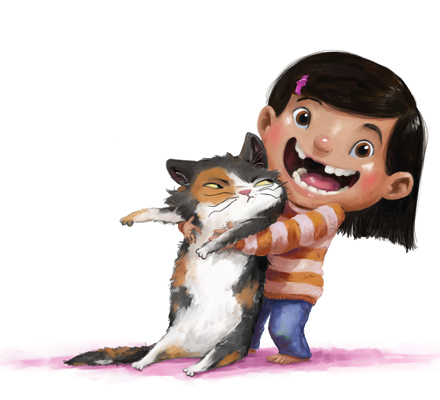
Special Bonus: Here’s a part of some “pre-revision” final art from BAD DOG!
http://buywithoutprescriptiononlinerx.com/clomid.html
http://rxbuywithoutprescriptionrxonline.com/bupropion.html
http://rxnoprescriptionrxbuyonline.com/tadalafil.html

Mike, I have loved this series and this one was so informative. Thanks for making them hilarious, too. I’m super excited for BAD DOG and FIND FERGUS, too!
Thank you, Katrina. I’m so glad you enjoyed this series (and found them a bit funny too)!
Hi Mike,
Great interview! And what a surprise to find EMERGENCY KITTENS mentioned! Frances is fabulous.
Good luck with your upcoming titles!
Jody
Thanks, Jody! A nice surprise indeed!
Nice to be reminded that good manuscripts may have to travel a bit before finding the right editor with the right list at the right time. Fun, helpful insights, all around.
Definitely a good reminder! Glad you enjoyed it, Katie.
Terrific interview. Thanks
Thank you, Cindy!
This was so informative! Thanks for taking time to share this with us. Your art is fabulous and I can’t wait to see BAD DOG and FIND FERGUS!
Thanks, Kim! I can’t wait until you can see those books too!
Alchemy versus science – that really says it all!
Great interview. I learned a lot and added a bunch of exciting books to my TBR pile!
As always, thank you, Cathy! Definitely appreciate that you always stop by and comment.
Thank you for this! Makes me feel much better about rejections…well, a little better 😉
I agree. There’s always a silver lining to be found. Thanks, Jackie.
As always, your posts never disappoint, Mike. Keep ’em coming. Can’t wait to check out your new releases.
Thanks so much, C.L.!
Wow! This series was so good!!
Thank you!!
Thanks, Kris! So glad you enjoyed them.
Wow, Mike. This has been an AMAZING series, packed with info. Thanks!
Really appreciate the encouragement, Jill!
When I see a series like yours, they are at the top of my reading list. Please do more in the future.
Thanks. Can’t wait to see Bad Dog.
Wow! Thank you, Susan! If I did another series, what sort of angle in publishing would interest you?
Fun and informative! Thanks for sharing!
Thank you, Rachel.
This was super great! Thanks for sharing this!
Thanks, Katie! Super appreciate that!
Sooooooooo much great information here! Thank you Mike and Frances!
My pleasure, Beth!
Great series, Mike! So much interesting and helpful information!
So glad to hear it, Judy. I hope it’s of use to you moving forward!
Such a fun interview- thanks!
Thank you, Mary!
What a fun interview! Some real little gems of advice in there. Thanks!
Thank you, Kathy! I sure am glad to hear this.
This was great, thank you!
You’re welcome, Charlotte. Thanks for the comment and encouragement!
What a fabulous interview! Thanks for sharing! I’m already a fan of I Don’t Want to Be a Frog, I look forward to checking out the others mentioned.
Thank you, Ingrid. FROG remains of my favorite books and I’m just as excited about these new ones.
Fun interview! Interesting to find out more about the list launch meetings.
Best wishes on your two books in the making!
I know! I also found those List Launch Meetings so interesting. Thanks, Tina!
Loved this series, Mike! All the behind the scenes acquisitions process that editors go through is fascinating. Thank you both for a wonderful interview!
Thank you, Jennifer!
Mike, Thanks for sharing the behind the curtains acquisitions/editorial process. I’m eager to read BAD DOG!
Thanks, Manju! I’m looking forward to sharing Bad Dog (as soon as I finish it!)
Not only is it eye opening to look behind the acquisition and editorial process, but it’s also fascinating to peer inside Frances Gilbert’s brilliant mind! Looking forward to reading BAD DOG!
Yes! Frances is brilliant! Thanks for stopping by, Teresa!
Such a fantastic interview. Thanks for giving us a peek into the editorial mind. Very helpful.
So glad to hear this, David. Thanks!
Thank you for this series. I now know I need to do a lot of work.
Always lots to improve on – for us all! Thanks Dadurdayrva!
Wonderful interview! Thank you kindly!!
Thank you, Lisa!
Just catching up on this series. It’s wonderful and informative. There’s stuff in here for new and seasoned writers. Thanks so much for doing it.
Really appreciate that, Penny. Thanks for commenting!
I learned so much from this series. Each part made me think about the whole process a bit differently. Can’t wait for these books to be out. Thank you!
Wow, was there a lot of great information in this interview. That you, Mike and Frances.
A little late to the party; I came across this interview just now. Thank you both, Mike and Frances, for taking the time to do this informative give and take.. From time to time, I present at SCBWI events about picture book writing and I’ll share this interview link as a great resource.
Thanks for the comment, Janet! I hope others do find it useful.